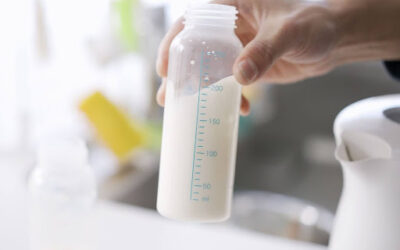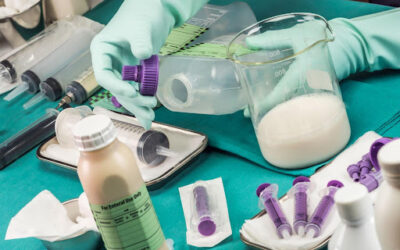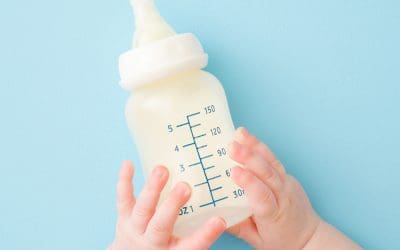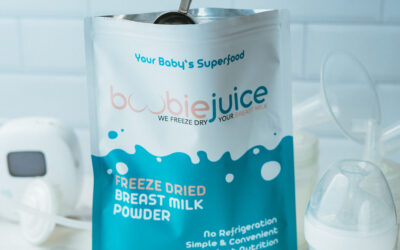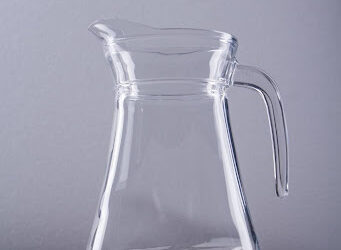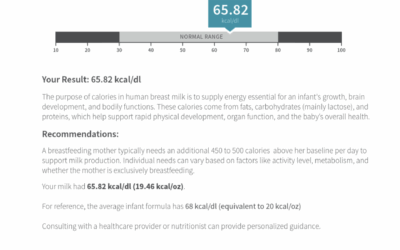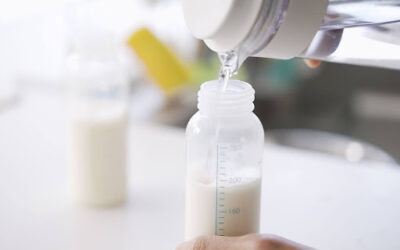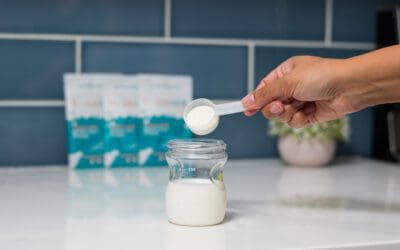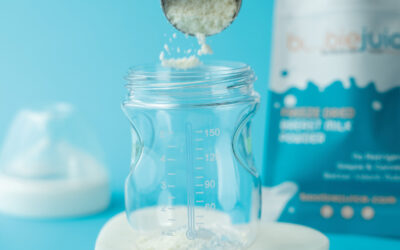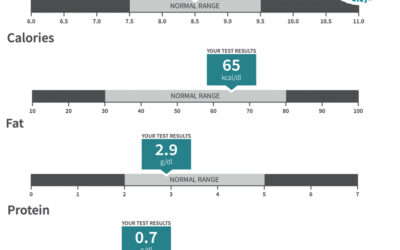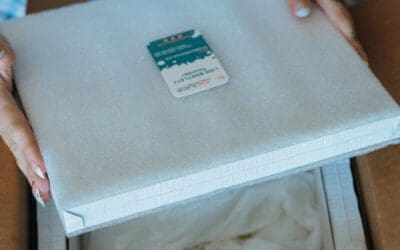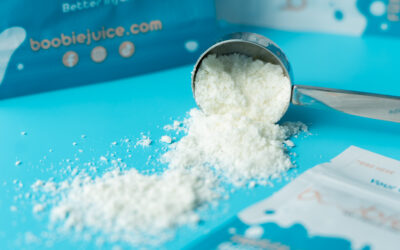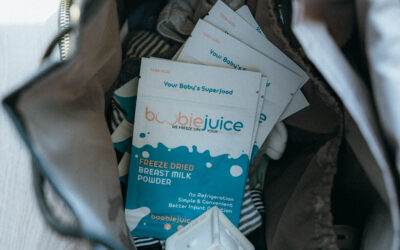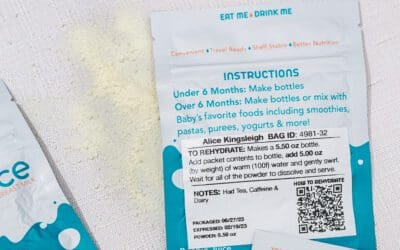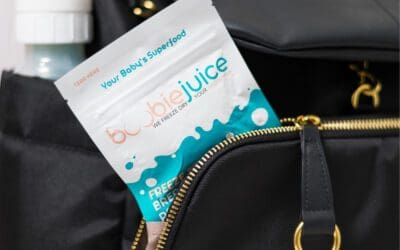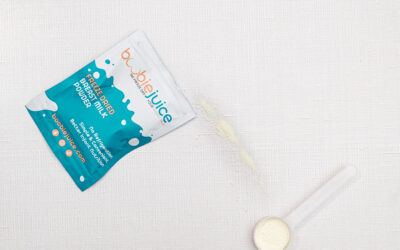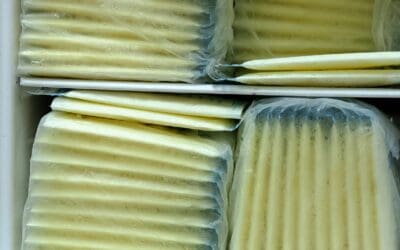Freeze Dried Breast Milk Blog
Everything you have wanted to know about Freeze Dried Breast MilkDoes freeze drying breast milk get rid of lipase?
Does freeze drying breast milk get rid of lipase taste? Freeze drying breast milk is a popular method for long-term storage and preservation. One common concern among breastfeeding mothers is the presence of lipase enzyme, which can cause a soapy or metallic taste in...
Do I Need Breast Milk Testing?
If you are breastfeeding, you probably have questions about the nutritional quality you are providing your baby. As a specialized food, breast milk (also known as human milk) is tailored to your baby’s needs, packed with immune-boosting antibodies, and evolves over...
Fortifying Breast Milk: What Mothers Can Naturally Do
In this article, we explore how mothers can fortify their breast milk naturally through diet, lifestyle, and lactation-supportive practices. We’ll also explain when fortifying breast milk may be beneficial and how freeze-drying breast milk (like we do at BoobieJuice) can help preserve and distribute fortified milk consistently over time.
How to Fortify Human Breast Milk with Breast Milk Powder
Breast milk is often referred to as “liquid gold” due to its unparalleled nutritional benefits for infants, providing essential macronutrients, antibodies, and immune-boosting properties. However, in certain cases, fortifying breast milk may be necessary to meet a...
What affects my breast milk quality?
Changes in a mother’s breast milk nutrition can be influenced by several factors, as the composition of breast milk is dynamic and adapts to various physiological, environmental, and dietary conditions. The main controllable impact for you nutritional makeup is...
What is the Pitcher Method for Breast Milk?
If you’re a pumping mom looking to simplify your milk storage routine, the pitcher method for breast milk might be the game-changer you're looking for. The pitcher method involves collecting all pumped milk from 24 hours into a large container, such as a sterilized...
How to Increase Breast Milk Supply When Pumping
For many moms, low breast milk supply can feel like an uphill battle—especially when pumping. New mothers often face unique challenges with low breast milk supply during the first few weeks, making the early days of breast milk production stressful. Whether you’re...
Can You Reheat Breast Milk? (7 Things to Know)
Breast milk, also known as human milk, is often called “liquid gold” for a reason—it’s packed with vital nutrients, antibodies, and enzymes that support a baby’s development. But with busy schedules and pumped milk stored for later use, many parents face a common...
Breast Milk Nutritional Testing
The Importance of Breast Milk Nutritional Composition Human breast milk is a complex, dynamic fluid tailored to meet the nutritional and developmental needs of infants. Its major nutritional components—macronutrients (carbohydrates, proteins, fats) and micronutrients...
How to Get Rid of Lipase in Breast Milk?
Does Freeze Drying Breast Milk Get Rid of Lipase Enzymes?Does freeze drying breast milk get rid of the off putting taste of high lipase taste? Freeze drying breast milk is a popular method for long-term storage and preservation. One common concern among breastfeeding...
How to Pack Frozen Breast Milk
Whether you’re donating your milk, storing it for your baby, or dropping it off at BoobieJuice, learning how to properly pack frozen breast milk ensures it stays safe, fresh, and effective. Below you'll find a comprehensive guide on freezing, packaging, and...
How long does freeze dried breast milk last?
Freeze-dried breast milk is a popular method of preserving breast milk that removes the water content, leaving behind a powder similar to in use to infant formula with the benefits of breast milk. One of the key advantages of this preservation method is its impressive...
What temperatures do proteins in breast milk begin to break down?
Some may wonder when warming or reheating frozen breast milk, what temperature may affect the proteins and nutrition in the milk. This article will discuss the protein components and the heat resistance of them. Human breast milk contains several key protein...
How to Prevent High Lipase in Breast Milk
Does freeze-drying help with lipase? Lipase is an enzyme naturally present in breast milk that can cause changes in taste and smell, affecting the overall quality of stored milk. Managing lipase activity is important for mothers who plan to store their breast milk for...
What is High-Lipase Breast Milk & Why Freeze Drying is a Game Changer
Breastfeeding mothers often hear about how "liquid gold" breast milk perfectly suits their baby’s needs. But for some moms, pumping and storing breast milk can come with an unexpected challenge—high-lipase breast milk. This natural occurrence can cause pumped milk to...
Does freeze drying breast milk lose nutrients?
Freeze drying breast milk is a common method used to preserve the nutritional properties, but many parents wonder if the freeze drying process leads to a loss of nutrients. Research has been conducted to assess the impact of freeze drying on breast milk, and the...
Is it better to freeze dry or dehydrate breast milk?
In this article, we will explore the two main methods of preserving fresh breast milk: freeze drying and dehydrating. We will discuss the importance of preserving nutrients in breast milk and compare the benefits of these methods, including exploring the most common...
Is Freeze Dried Breast Milk Safe?
Freeze dried breast milk utilizes sublimation, a well-established food preservation method that involves removing the water content from breast milk and turning it into a powdered form. This process, known as lyophilization, requires the milk to be frozen and then...
How to Freeze Breast Milk
Freezing breast milk properly is essential to preserving its nutritional quality, making feedings easier, and keeping your baby safe. It is important to follow breast milk storage guidelines to ensure the safety and quality of the milk. Whether you’re building a...
How Much Does It Cost to Freeze-Dry (Powder) Breast Milk?
As more parents explore ways to preserve their breast milk for longer durations, freeze-drying has emerged as a premium, practical, and nutrient-preserving option. If you're wondering, “How much does it cost to freeze-dry breast milk?” you're in the right place! At...
What’s the Ideal Freeze Dried Breast Milk to Water Ratio?
When it comes to rehydrating freeze dried breast milk, many moms have questions about the right amount of water to use. The water rehydration ratio for freeze dried breast milk can varies between 80–90% or more water depending on each unique expression. There are many...
Why do people freeze dry breast milk?
Freeze drying breast milk has become a popular option for parents looking to preserve their breast milk and extend its shelf life. By removing the water content from breast milk, freeze drying turns it into a powdered form that can be stored for longer periods. This...
How to Freeze-Dry Breast Milk
Freeze drying breast milk is a process that removes the water content from frozen breast milk, preserving its nutritional properties and allowing for long-term storage. This method provides convenience for breastfeeding mothers who want to store their milk without...
How do you freeze dry breast milk?
Freeze drying breast milk is a process that removes the water content from frozen breast milk, preserving its nutritional properties and allowing for long term storage. This method provides convenience for breastfeeding mothers who want to store their milk without...
How long can I keep breast milk frozen?
Breast milk is a valuable source of nutrition for infants, and many breastfeeding moms choose to express and store their breast milk for later use. Freezing breast milk is a common method of preserving it for an extended period. However, it is essential to understand...
How can I turn my breast milk into powder?
Breast milk has long been recognized as the gold standard of infant nutrition, packed with essential nutrients for optimal growth and development. However, frozen breast milk has a limited shelf life of up to 1 year, and its nutritional quality gradually declines over...
How to Freeze Dry Breast Milk at Home
Freezing breast milk is a common practice for preserving it, but many people wonder if they can take it a step further and freeze dry their breast milk at home. So, can you freeze dry breast milk at home? While freeze drying can extend the shelf life of breast milk...
What Does High Lipase Milk Taste Like and How to Improve It?
When it comes to providing the best nourishment for their infants, breastfeeding mothers always strive for perfection. However, some mothers may encounter challenges with the taste and aroma of their breast milk due to high lipase levels. This can result in a soapy or...

